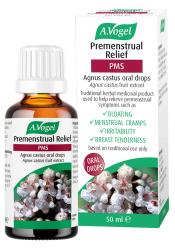Sanitary products: what should you consider?
Selecting a sanitary product can be a daunting experience: where do you start? On this page I aim to outline the options out there so you can be sure you’re making the right choice for you. There are a number of factors to consider in order to help you along the way!
First, let’s consider absorbency. So depending on how heavy or light your periods generally are, this can have a bearing on what product you choose. Generally, most types of products have different absorbency ratings available, so on the whole, you can still pick the type of product that suits you and then select the appropriate absorbency category.
Next, think about the shape and location of the product. Ok, so location might seem obvious, but actually, there are both internal and external products available. Which one you choose will depend on how comfortable you feel – external might be a better options for girls just starting their periods and over time an internal product might be preferred as they are often more versatile. Shape can depend on your frame and what feels comfortable! It often comes down to some trial and error.
Next: let’s talk materials. Often the more mainstream disposable products are made from a combination of industrial cotton, plastic, latex and absorbent gels. These can be problematic for a number of reasons; these materials are more likely to cause irritation and even allergic reactions – not to mention the impact on the environment. Did you know that a typical disposable sanitary towel can take over 500 years to decompose!! These are the most readily used sanitary product worldwide so that’s a lot of waste to think about...
Finally, you might also want to consider cost. Sanitary products vary in price depending on the materials used but then you have disposable vs. reusable product options to consider too. So the price of disposable products are cheaper to start with and you might not notice this as part of your monthly shop but over time that cost builds up, right? So what about reusable products: you will pay a little more for this product initially but then it can last you for several months, years even! What’s the catch? Well they are a little messier and not quite so convenient - you need to take the time to clean these products after use, not everyone’s cup of tea but you could easily get used to it! You would be doing your bit for the environment too.
OK, now I’ve got you thinking about all of that, let’s consider your options.
Sanitary towels
Sanitary towels, also called sanitary pads are the original go-to product for many menstruating women across the world. During the 19th century the first disposable sanitary pads were produced from wood pulp and bandages (some of the materials could be washed and re-used).
This developed over time and difference materials were tried and tested until eventually the cotton wool pads landed. Consider this: until only around 30 years ago many sanitary towels were attached to a belt around the waist to keep them in place! This wasn’t so practical though and the addition of adhesive strips were soon common place so the towel could easily be inserted inside a woman’s pants and stay in place. Over time ‘wings’ have become an option on many products too as these also help keep the sanitary towels secure. Sanitary towels are now available in an abundance of different sizes, shapes, thicknesses and absorbency ratings.
A mixture of synthetic materials including industrial cotton (which is often bleached), latex other plastics and polyacrylate gels (to soak up the liquid) generally make up a typical sanitary towel nowadays. However, if you don’t really like the sound of this arrangement, more natural products are also available. 100% natural cotton, bleach, paraben and fragrance-free sanitary towels are now also readily available which are ideal for people who are sensitive to normal pads or conscious of their toxic load.
Sanitary towels are external products and with the right absorbency rating can be used for several hours and safely overnight. They are often a popular choice for girls first starting their period and come in a wide range of sizes and shapes to suit all period types – from panty liners useful for spotting or as you are coming to the end of your periods, to super absorbency night time pads. Options galore!
Tampons
Tampons are a popular internal disposable sanitary product. Tampons are small tubes of absorbent cotton wool which are inserted inside your vagina in order to absorb any blood before it leaves your body. Some tampons have the addition of cardboard applicators which help with insertion. If inserted correctly tampons are extremely comfortable and can go relatively unnoticed. Tampons have a string attached which hangs outside the body so it can be very easily removed.
You shouldn’t wear a tampon for more than 4-6 hours so always keep track. With tampons there is the small risk of something called Toxic Shock Syndrome (TSS). This is rare but you can decrease the risk further by regularly changing your tampon, avoiding using too high an absorbency rating and avoiding using them overnight.
Again, tampons are available in a variety of sizes with different absorbency ratings to suit your needs and different materials are readily available. Most brands of tampons use non-organic cotton and rayon with the final product being bleached; however, there are some more natural alternatives out there. Organic, cotton tampons are also available which are gentler on the vagina and often more biodegradable.
Tampons are an excellent option for active individuals and can be worn whilst swimming for example.
Menstrual cups
Menstrual cups are an internal sanitary product and a nice alternative to tampons – their main benefits being that they are re-usable which is cost effective, they are more environmentally friendly as you can re-use them for several years(!) and they can be worn for longer periods of time with no risk of TSS – much more convenient.
The cup sits inside the vagina and catches the menstrual flow rather than absorbing it. If inserted correctly the cup should seal and won’t leak. By pulling the stem and pinching the base of the cup, the seal is released and the cup can be easily removed. The contents should be emptied down your toilet and the cup can be washed and re-used. The cup can be emptied as little as every 12 hours and rarely needs emptied more often than this, although this dependent on your individual flow. The cups can be used whilst taking part in sports and during the night. Definitely something to consider!
There are different sizes of cups, made with different materials, some are soft and sit further up in the vagina nearer the cervix, although in some cases these versions are disposable. Most variations are made from silicone, sit lower down in the vagina and are much more durable, they can last up to 10 years in some cases, imagine not having to buy another sanitary product for 10 whole years!
Re-usable pads
Re-usable sanitary pads, also called re-usable cloths are similar to sanitary pads but they can be washed and re-used! These are available in a number of sizes, shapes, and fun designs and have the perks of being cost effective and environmentally friendly. They are generally made from comfy cotton for added comfort.
Washable tampons
Re-usable tampons are now becoming more common too. These are often similar shape to the average disposable tampon but are often sewn or knitted from material such as cotton. You can buy these online in a range of fun designs – buy a selection so you always have one to hand.
Washable tampons have some of the same perks as the reusable pads and will tend to work out more budget-friendly over time and they won’t clog up the environment like some of the disposable options. Sea sponges are another take on re-usable tampons but as these are actual organisms coming from the sea, there is some controversy over how clean and hygienic they are in some cases. They can become messy if you have heavier periods, so not often a top pick.
Absorbent period pants
Nowadays there are even such things as proper period pants! These are similar to the reusable pads except the absorbent layers are built into a range of stylish underwear! Many of these companies (such as Shethinx) help support the environment and women in developing countries who often struggle to cope with limited resources.
Check them out and you may just think differently about sanitary products going forward!





 Looking for our products in a store near you?
Looking for our products in a store near you?

